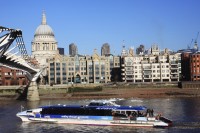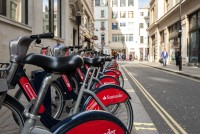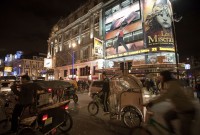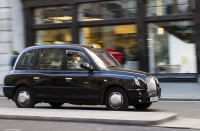- Selling
- Buying
- Landlords
- B&R Landlord hub
- Management services
- Vacant management
- Landlord reviews
- Rental investment
- Furnishing and refurbishment
- Yield calculator
- Free online valuation
- Stamp duty calculator
- ROI calculator
- Landlord resources
- EPC guide
- Video hub
- Area guides
- Fees for landlord
- Lettings Laws
- Why choose Benham and Reeves
- Renting
- New homes
- House prices
- International services
International offices
China, Hong Kong SAR, India, Indonesia, Malaysia, Middle East, Pakistan, Qatar, Singapore, South Africa, Thailand and Turkey
Learn more - Contact
- News
- Contact
- About us
- My B&R
The Evolution of London Transport
- Lifestyle & renting
- 09.09.15
- Benham and Reeves
|
Getting your Trinity Audio player ready...
|
Very soon, Insomniacs, dedicated clubbers and office cleaners will no longer have London to themselves in the early hours as the London Underground plans to launch round-the-clock Tube services this Autumn. The plan is for the Underground to be open 24 hours at weekends on selected lines and we think Londoners will welcome it.
24 hour Travel
 Trains on the Victoria, Piccadilly, Jubilee, Central and Northern lines will run uninterrupted from Friday morning to Sunday night, providing a boost to the Capital’s already thriving social scene. Now, instead of hurrying to catch a train home from the Royal Albert Hall on a Friday night, concert goers have the option of stopping off in the West End for a late supper en-route. Admittedly, this can be done using the existing night bus network where a journey from South Kensington to Tottenham Court Road only takes 20 minutes, but as the nights grow colder, the new Underground option looks way better. A £360 million stimulus to the local economy and 2000 jobs are set to revitalise the London entertainment scene in the same manner that the night buses did, but the citywide transport revolution doesn’t intend to stop just there.
Trains on the Victoria, Piccadilly, Jubilee, Central and Northern lines will run uninterrupted from Friday morning to Sunday night, providing a boost to the Capital’s already thriving social scene. Now, instead of hurrying to catch a train home from the Royal Albert Hall on a Friday night, concert goers have the option of stopping off in the West End for a late supper en-route. Admittedly, this can be done using the existing night bus network where a journey from South Kensington to Tottenham Court Road only takes 20 minutes, but as the nights grow colder, the new Underground option looks way better. A £360 million stimulus to the local economy and 2000 jobs are set to revitalise the London entertainment scene in the same manner that the night buses did, but the citywide transport revolution doesn’t intend to stop just there.
Crossrail
Commuters from areas outside the Tube zones have traditionally used overground networks to reach London, before linking with the Underground at a main terminus – Paddington, St Pancras, Liverpool St, London Bridge and Victoria being the most prominent of these hubs. The £15 billion Crossrail initiative will bring these important satellite towns in from the cold by drastically cutting travel times and bypassing the need for interchanging at Zone 1. By 2018, 1.5 million more people will be able to reach central London in 45 minutes or less. Towns like Reading, Maidenhead, Shenfield and Brentwood will be able to directly connect with the West End, the City, Docklands and Heathrow Airport.
The ramifications of the scheme are enormous. Property hotspots will be springing up all along the line, with previously overlooked housing stock becoming desirable almost overnight. The Tech Start-ups of East London will be just 30 minutes away from the digital giants situated along the M4 corridor. Woolwich will join Greenwich as a riverside haven for corporate high-flyers and all international airports will be more closely linked than ever. It’s doubtful whether the Victorian pioneers that dug the tunnels of the fledging Metropolitan line between Farringdon and Paddington could have foreseen its future impact. They just wanted to get mid 1800s pedestrians out from under the hooves of all the hazardous horse-drawn traffic, but by the1930s this same line was extending outside the city limits, inventing “suburbia” and creating what we now know as Greater London.
Getting about by River
 However, getting around needn’t just be about speed, commerce and interconnectivity as sometimes the quirkier trips are the ones that create the best memories. The River Thames is London’s most ancient transport link, one which, 30 years ago, seemed doomed by pollution and neglect. Today it has a thriving river bus infrastructure that makes use of fast and reliable vessels to ferry passengers from Embankment to Greenwich. Many of our corporate tenants favour this way of commuting up and down the river and with many new property developments dotted along the river banks, commuting has never been easier. No longer a favourite of just sightseers and school groups, these Thames Clipper routes are regularly used by commuters as they shuttle passengers from riverside homes to offices in the City and Canary Wharf. A journey from Greenwich to Canary Wharf will take you 15 minutes and another 15 minutes will get you to Blackfriars. The river buses connect handily with the Docklands Light Railway, an innovative driverless shuttle that links the Docklands with the City, Stratford and London City Airport.
However, getting around needn’t just be about speed, commerce and interconnectivity as sometimes the quirkier trips are the ones that create the best memories. The River Thames is London’s most ancient transport link, one which, 30 years ago, seemed doomed by pollution and neglect. Today it has a thriving river bus infrastructure that makes use of fast and reliable vessels to ferry passengers from Embankment to Greenwich. Many of our corporate tenants favour this way of commuting up and down the river and with many new property developments dotted along the river banks, commuting has never been easier. No longer a favourite of just sightseers and school groups, these Thames Clipper routes are regularly used by commuters as they shuttle passengers from riverside homes to offices in the City and Canary Wharf. A journey from Greenwich to Canary Wharf will take you 15 minutes and another 15 minutes will get you to Blackfriars. The river buses connect handily with the Docklands Light Railway, an innovative driverless shuttle that links the Docklands with the City, Stratford and London City Airport.
Pedal Power
 The 2012 Olympics saw a number of imaginative schemes launched in East London and one of the most visibly striking of them was a cable car service that linked the Olympic Stadium in Stratford with the O2 Centre in Greenwich. All you need to use this service is £4.50 (£3.40 with an Oyster Card) and a head for heights! Meanwhile, down at street level, an urban bicycle scheme – known as Boris Bikes – continues to be a popular way of getting around. Just get off the Tube a couple of stops early, rent a bicycle for £2 and you’re instantly boosting your fitness levels while, at the same time, reducing your carbon footprint. If you complete your journey in under 30 minutes, there’s no extra cost. After that it costs £2 per half hour. Want to use pedal power but don’t fancy the hard work?
The 2012 Olympics saw a number of imaginative schemes launched in East London and one of the most visibly striking of them was a cable car service that linked the Olympic Stadium in Stratford with the O2 Centre in Greenwich. All you need to use this service is £4.50 (£3.40 with an Oyster Card) and a head for heights! Meanwhile, down at street level, an urban bicycle scheme – known as Boris Bikes – continues to be a popular way of getting around. Just get off the Tube a couple of stops early, rent a bicycle for £2 and you’re instantly boosting your fitness levels while, at the same time, reducing your carbon footprint. If you complete your journey in under 30 minutes, there’s no extra cost. After that it costs £2 per half hour. Want to use pedal power but don’t fancy the hard work?

In Mayfair, there’s been a boom in night time rickshaw transport over the last five years owing to their intimate vibe and traffic dodging skills. South of the river, there is one suburb that has taken a different approach to tackling the transportation issues it faces. Croydon invested in a tram line system 15 years ago and hasn’t looked back and this is important to Londoners because the fast link between Victoria and East Croydon make these routes eminently accessible. Apart from Croydon, the service connects with Wimbledon, Bromley and Sutton and accepts Oyster Cards.

For total passenger flexibility, though, it’s hard to beat the good old London taxi cab with its distinctive black livery and knowledgeable drivers. And with the advent of the Uber taxi app, private transport can be summoned from the comfort of your home or restaurant seat – no more frantic whistling on street corners in the pouring rain, thank you!
It seems that in the Capital, something is always happening somewhere and with the seemingly inexhaustible London transport options on offer, there’s no longer any need for anyone to miss out.
If you would like information regarding the London property market contact one of our friendly staff here.
Sign up to our newsletter
Subscribe
How much is your property worth?














